Are you feeling overwhelmed by the complexities of inheritance tax planning? You're not alone'many people find it challenging to navigate the various rules and regulations that can impact how much of your estate will ultimately go to your loved ones. In this article, we'll break down essential strategies and tips for effective inheritance tax planning, ensuring that your hard-earned assets are passed on with minimal tax implications. So, let's dive in and explore how you can secure your family's future!
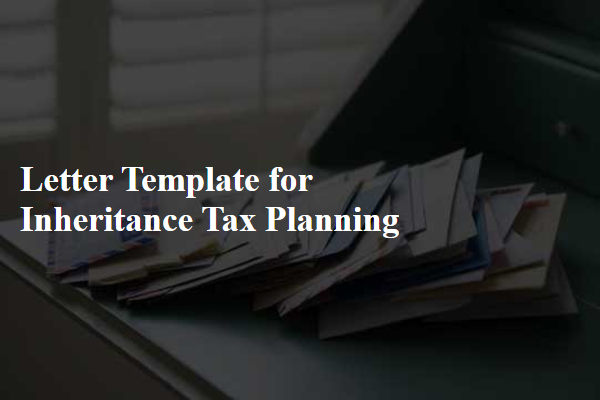
Clarity of Asset Distribution
Asset distribution clarity is essential for effective inheritance tax planning. Properly organized estates ensure that beneficiaries, such as children or charitable organizations, receive designated assets without legal disputes. Accurate itemization of assets, including real estate (valued at current market prices), investments, and personal property, is crucial to avoid potential underreporting. Tax implications vary; for example, the United States imposes a federal estate tax on estates exceeding $12.92 million for 2023. Detailed records of asset valuations, along with documented wishes in wills, facilitate smoother transitions and prevent conflicts. Additionally, consulting estate planning professionals can optimize strategies, thereby minimizing tax liabilities and ensuring equitable distributions among heirs.
Tax Liability Assessment
Inheritance tax planning is a crucial financial strategy to minimize tax liability during the transfer of assets upon death. A comprehensive assessment involves determining potential tax obligations based on the net value of the estate, which includes real estate, investments, and personal property. For instance, in the United States, the federal estate tax exemption is set at $12.92 million in 2023. Estates exceeding this threshold may incur a tax rate ranging from 18% to 40%. Key considerations include the use of trusts, charitable donations, and gifting strategies, which can effectively reduce taxable estate value. State-specific regulations may also influence tax implications; for example, California has no state inheritance tax, while New Jersey imposes a tax on inheritances exceeding specific amounts. Engaging with a financial advisor or estate attorney is recommended to navigate complex regulations and optimize tax strategies effectively.
Beneficiary Designations
Beneficiary designations play a crucial role in inheritance tax planning, particularly for financial accounts and insurance policies. These designations determine the rightful recipients upon the owner's death, enabling assets to bypass the probate process, thus avoiding potential delays and additional costs. For example, naming a spouse as the primary beneficiary on a life insurance policy can reduce the overall taxable estate, as immediate payouts (up to $11.7 million as of 2021) are often exempt from taxation. Additionally, retirement accounts like 401(k)s or IRAs allow account holders to designate beneficiaries directly, facilitating a swift transfer of funds. Properly updating these designations during significant life events like marriage, divorce, or the birth of a child is vital to ensure assets are distributed according to the owner's wishes while minimizing tax liabilities and simplifying the inheritance process.
Legal Compliance and Documentation
Inheritance tax planning requires meticulous legal compliance and thorough documentation processes. Legal frameworks vary significantly across different regions, such as the United Kingdom and the United States, which impose different tax rates depending on estate values, with the UK applying a 40% standard rate over a threshold of PS325,000 as of April 2023. Essential documents include wills, which legally articulate the distribution of assets, and trust deeds, which ensure that wealth is managed according to specific regulations. Additionally, filing requirements involve submitting Inheritance Tax (IHT) forms to the HM Revenue and Customs (HMRC) or equivalent entities within 12 months after death. Adequate record-keeping also entails maintaining updated valuations of properties, bank statements, and any relevant asset documentation to comply with tax obligations while optimizing the estate's financial efficiency. Proper adherence to these regulations can significantly diminish the potential tax burden for heirs, ensuring a smoother transition of assets.
Update and Review Regularly
Regular updates and reviews of inheritance tax planning strategies are critical in ensuring effective estate management. Regulatory changes (such as alterations in tax laws by governments, including the UK and the US) can significantly impact inheritance tax liabilities. Planning should incorporate current thresholds; for instance, in the UK, the nil-rate band stands at PS325,000, while the residence nil-rate band can add up to PS175,000 for properties. Additionally, regular assessments of estate value, including real estate properties, financial accounts, and collectibles, are essential to avoid unexpected tax burdens upon death. Consulting financial advisors, estate planners, and tax professionals on a periodic basis can help identify necessary adjustments, ensuring that family wealth is preserved and effectively transferred to beneficiaries.
Letter Template For Inheritance Tax Planning Samples
Letter template of inheritance tax planning for financial asset distribution.
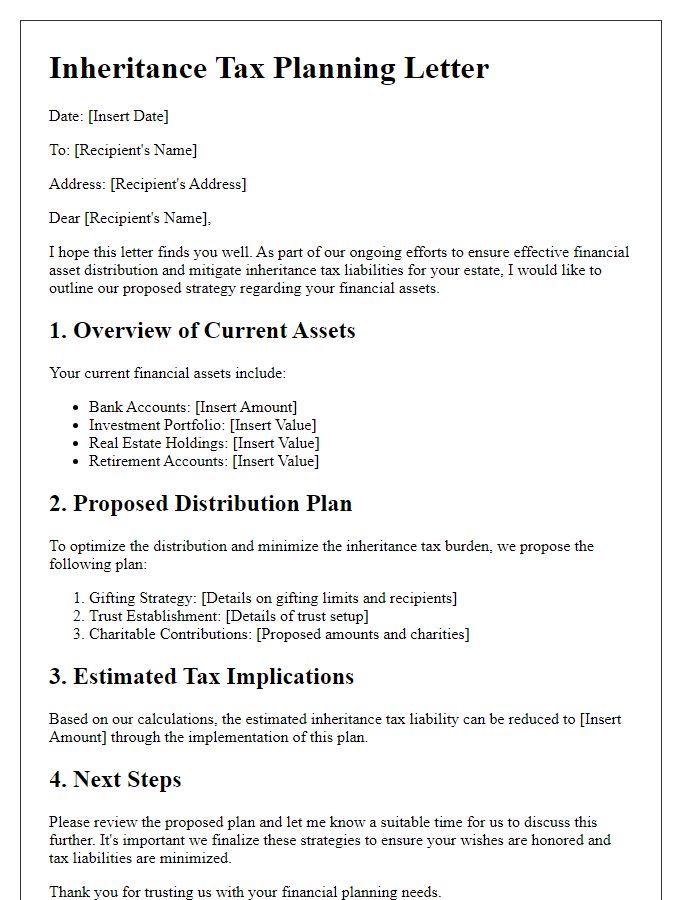

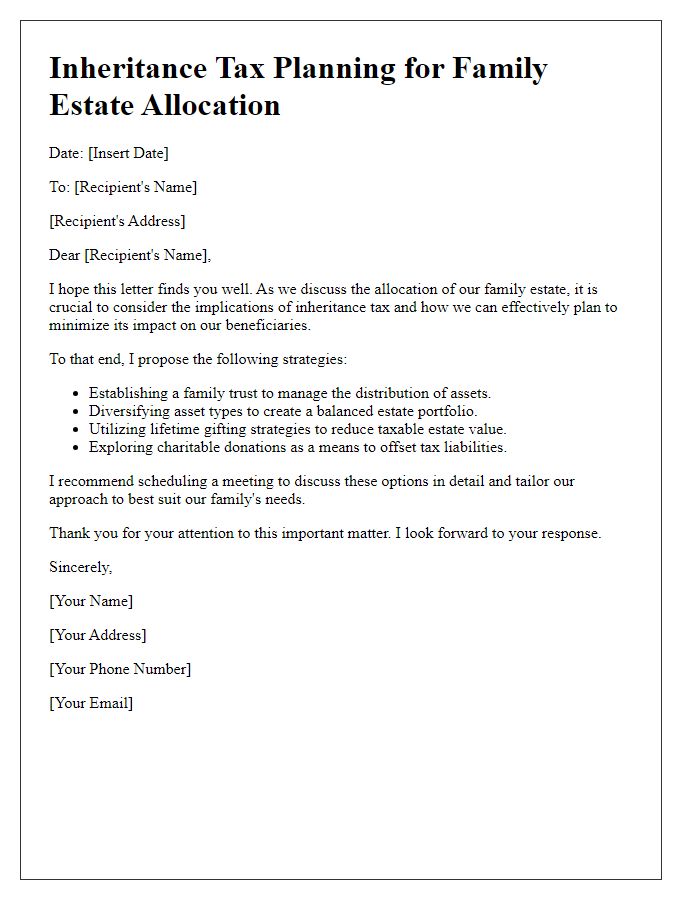
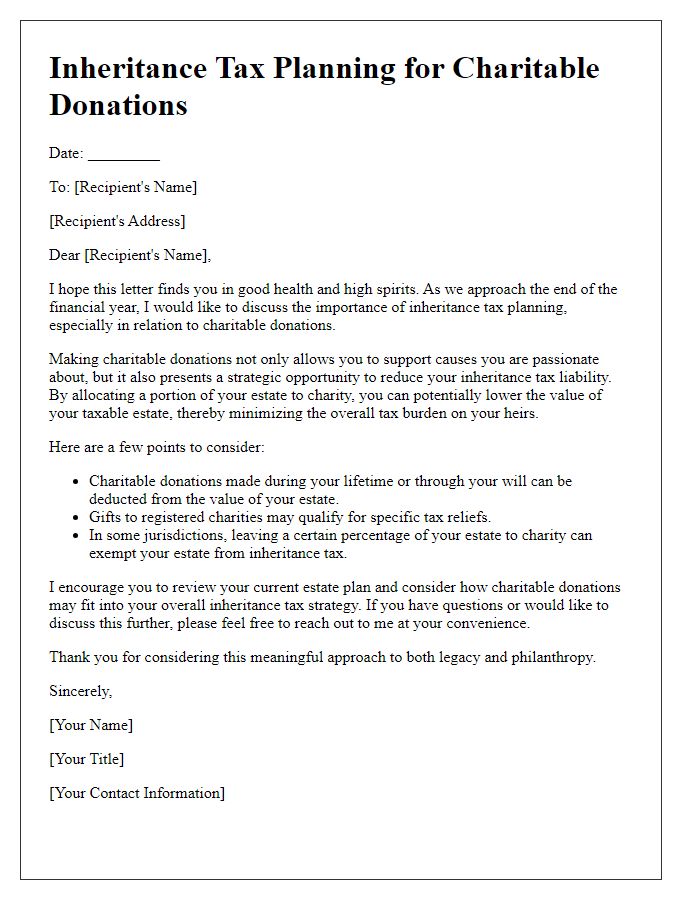
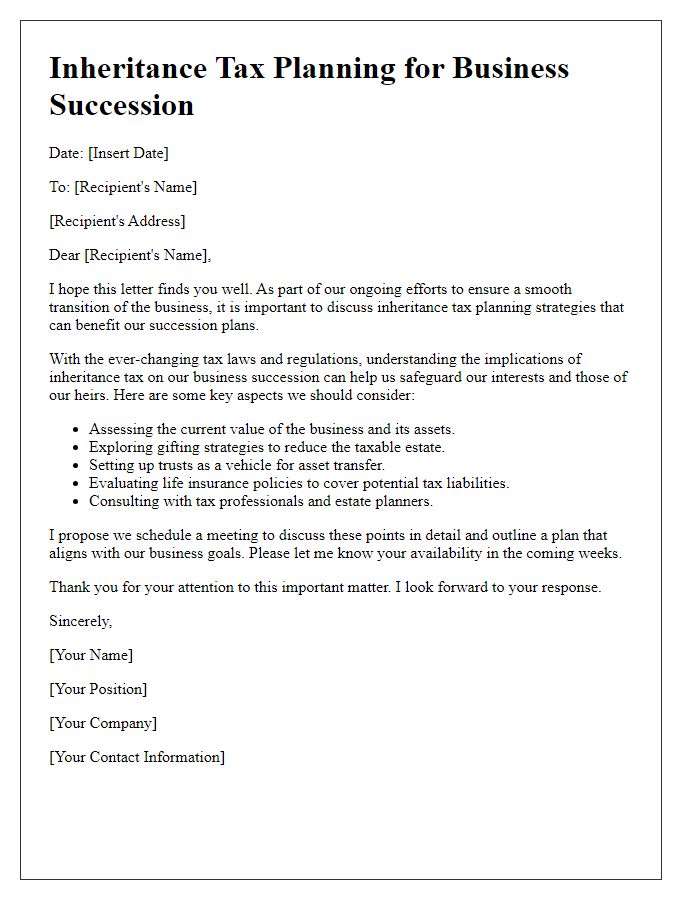
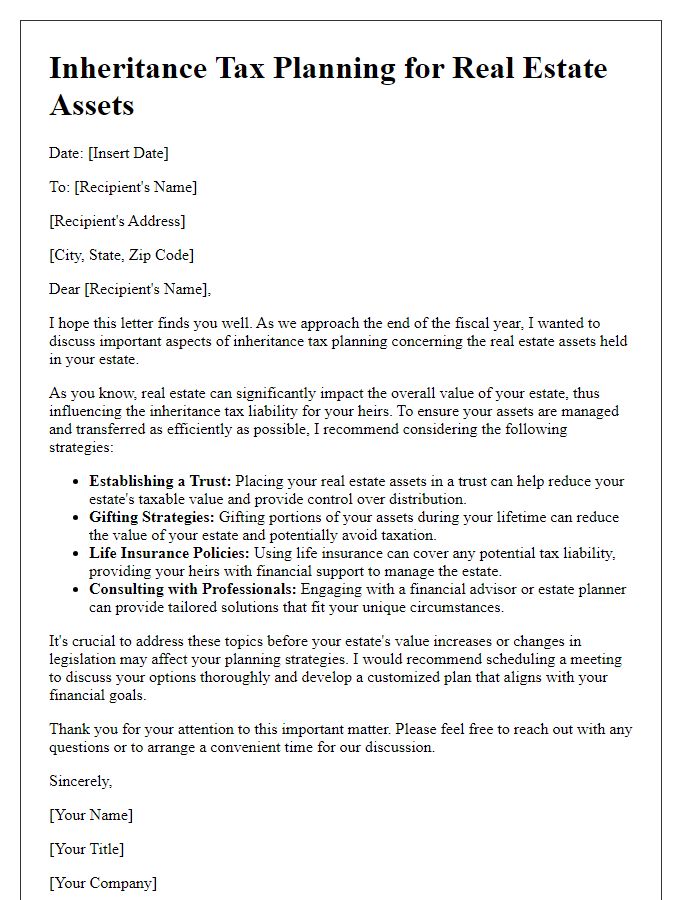
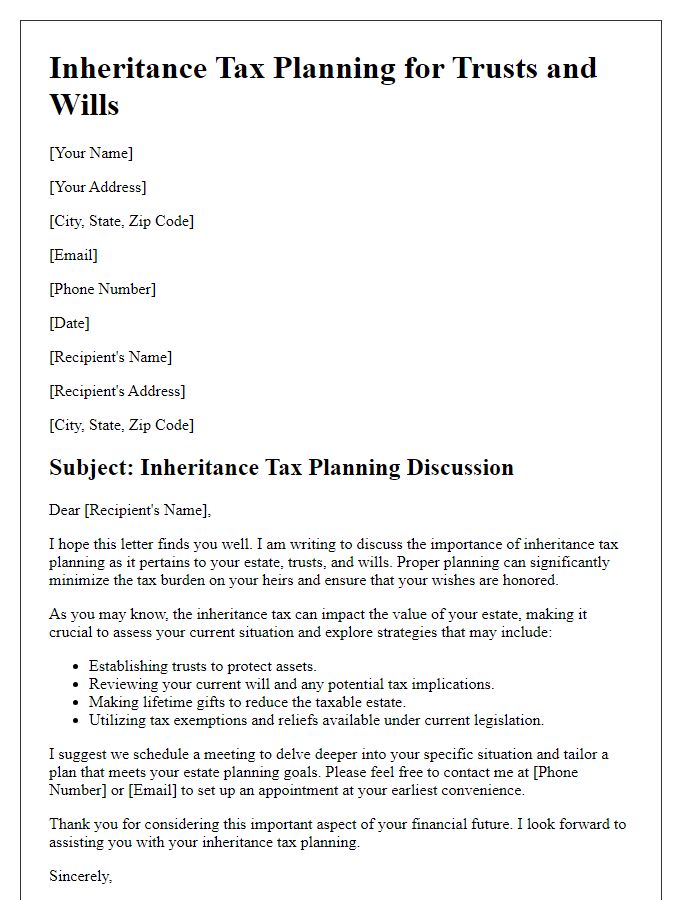
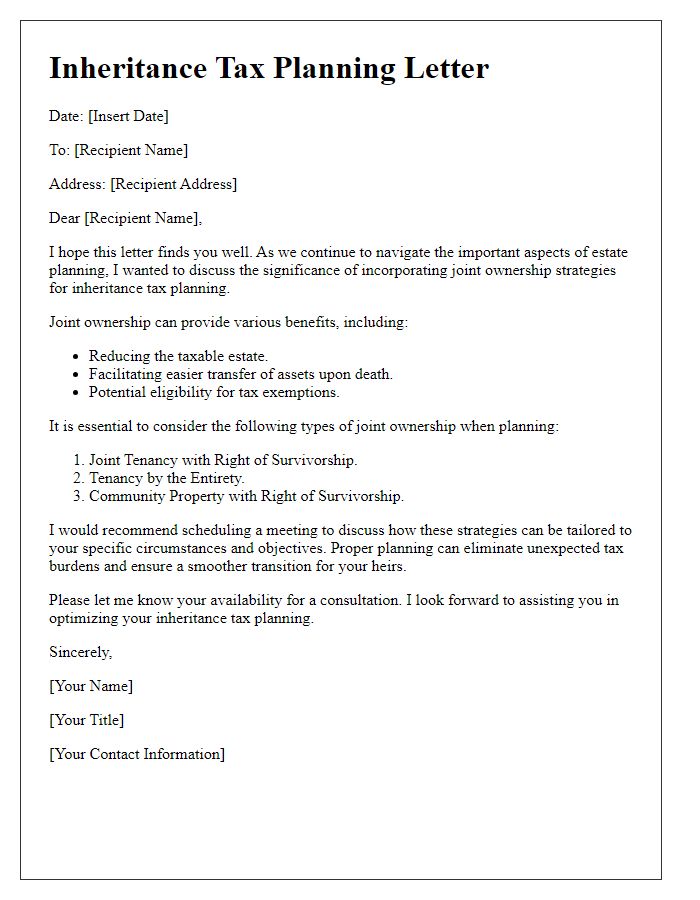
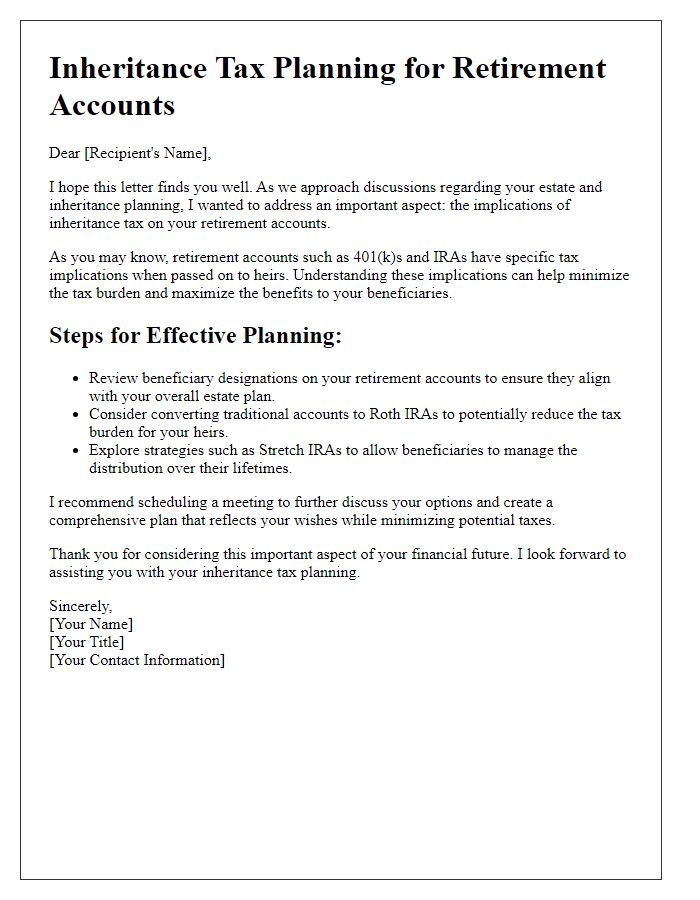
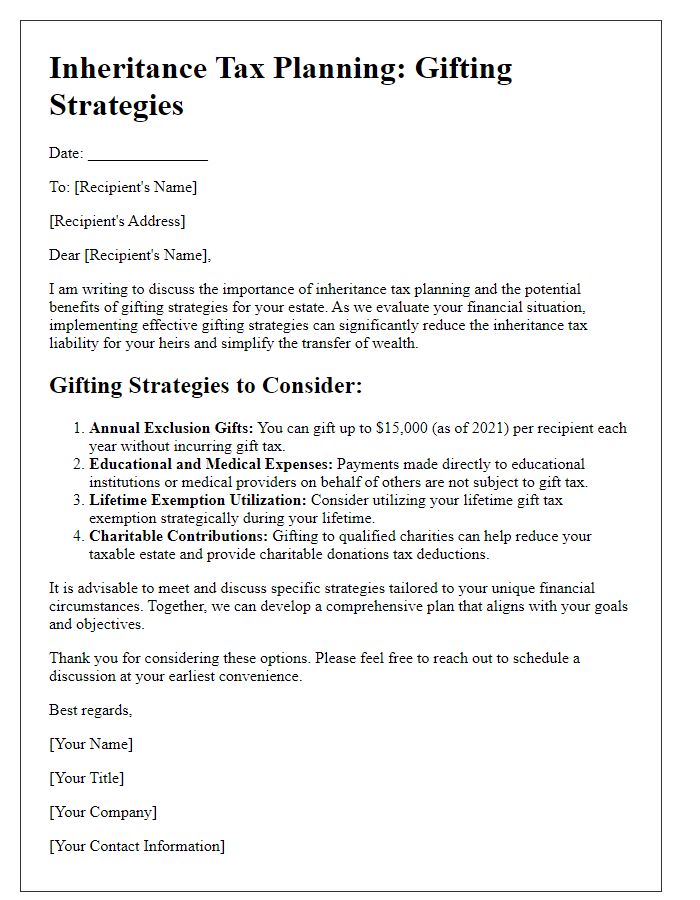
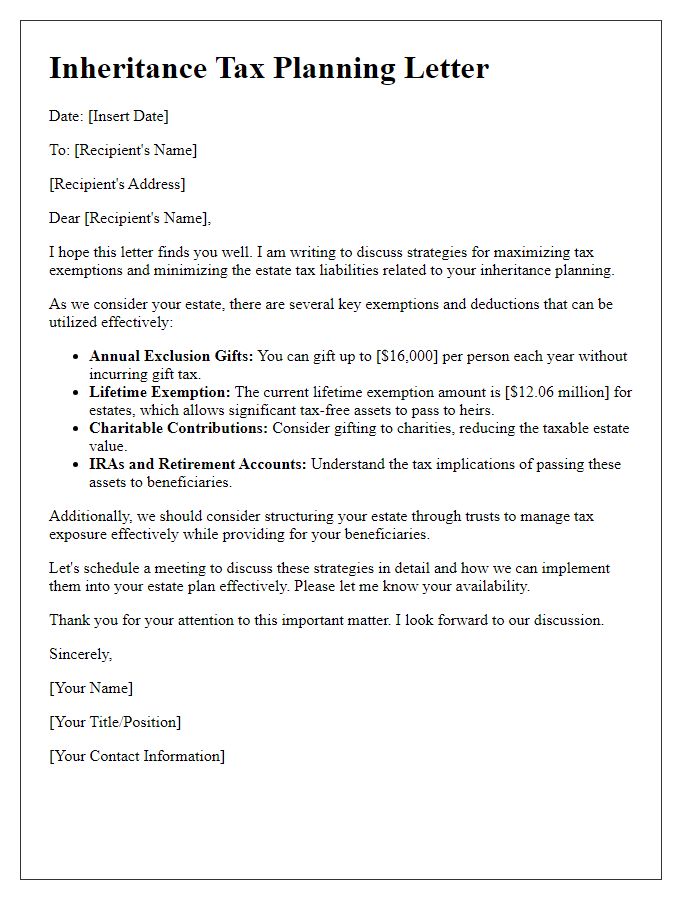





Comments